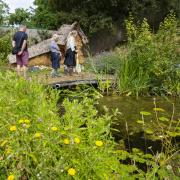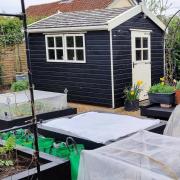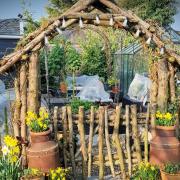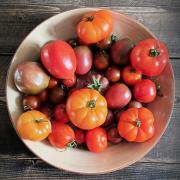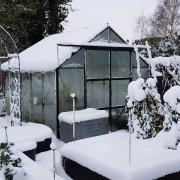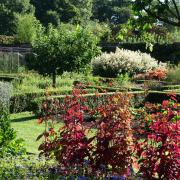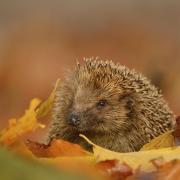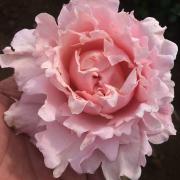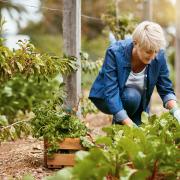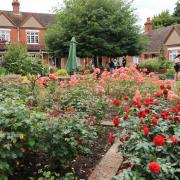Smeetham Hall on the Suffolk/Essex border is a haven for flora and fauna, as well as a stunning wedding venue. Words: Jane Crowe Photos: Clare Dawson

These days it is rare for a farm of 400 acres to be commercially viable, however intensively it might be managed. Modern pressures to produce high yielding crops can lead to the over use of herbicides and pesticides, which inevitably leads to a decline in the richness of our natural wildlife.
For one man with a deep sense of responsibility for the land he farms, commercialisation is no longer an issue. With a beautifully converted barn registered as a wedding venue to provide additional income, Anthony Hyde Parker is now able to concentrate on making nearly half of his land completely friendly for the natural world. On meeting him this passion to change the tide of destruction is infectious, and it doesn’t take long to be caught up in his enthusiasm.
His farm lies on the gently rolling hills near Bulmer on the Suffolk/Essex border. With pastoral views in all directions, it is a truly beautiful place, worthy of all his efforts to conserve its tranquility.
His fields are surrounded by permanent nectar rich margins, while his meadows are sown with specific mixtures of wild flowers and grasses, which provide the best possible habitats for butterflies, moths and bees.

To the uninitiated these fields might seem colourful, if a little sparse and untidy, and dare one say, full of ‘weeds’. But look carefully and there is a wealth of delicate species in the ley – wild carrot and field scabious, clover and musk mallow, birds foot trefoil, meadow, sheep and red fescue.
Lucerne attracts the Clouded Yellow butterflies, sorrel the small Coppers, ladies’ bedstraw the Hummingbird Hawk moth, and so the list goes on. But perhaps the most interesting plant from Anthony’s point of view is the bright pink legume, sainfoin. This comparatively unknown plant provides bloat free forage for ruminants, a real advantage over clover and lucerne, and has also proved to be a natural altheminetic, or wormer. Considered one of the healthiest plants available, it also has a very long tap root making the plant draught resistant. The flowers attract huge numbers of insects, and studies claim that sainfoin can attract ten times more bees than white clover. Bee keepers consider sainfion honey superior to any other source. So why isn’t this plant more widely grown?
In due course all these meadows are cut and made into hay, albeit light in volume and delicate to handle, but exceptionally nutritious in content. How lucky the horse owner who could find hay of this calibre in winter.
The fields and hedgerows around Smeetham Hall teem with wildlife. The myriad species of insects attract thousands of voles, which in turn sustain an impressive array of raptors. Buzzards and hawks are constantly circling, while a little owl has been sighted fighting off one of the nine resident barn owls.
Recently a moth trap was set up at night in the garden producing a dazzling array of species, including small and large, pink and green hawk moths and a Silver Wine moth, all testament to the rich diversity of habitat on the farm
Young pheasants and partridge feed on the phalacea fields and red deer and muntjac are attracted by the abundant pastures. Admittedly these can prove a problem at times so, in the absence of wolves, man does have to step in as head of the food chain to keep a balance.
Anthony works hard at ensuring undesirable plants are kept under control, pulling ragwort and thistles and stopping hedges from invading the field margins. Sad though it might be, if nature really was left to her own devices, this ‘garden of Eden’ would very soon return to scrubland.
Meanwhile his wife, Bridget, organises the numerous functions in the wedding barn, so beautifully situated. With roses climbing the pink washed walls and overlooking a lake, it must be one of the prettiest wedding venues in the area.
www.smeethamhall.co.uk




